Chem Quiz 3 Material
1/42
There's no tags or description
Looks like no tags are added yet.
Name | Mastery | Learn | Test | Matching | Spaced |
|---|
No study sessions yet.
43 Terms
In strong base and weak acid titrations, what is the pH at the 0.5 equivalence point? Is it a buffer?
pH = pKA. Yes, its a buffer
Describe the components of a weak acid/strong base titration curves
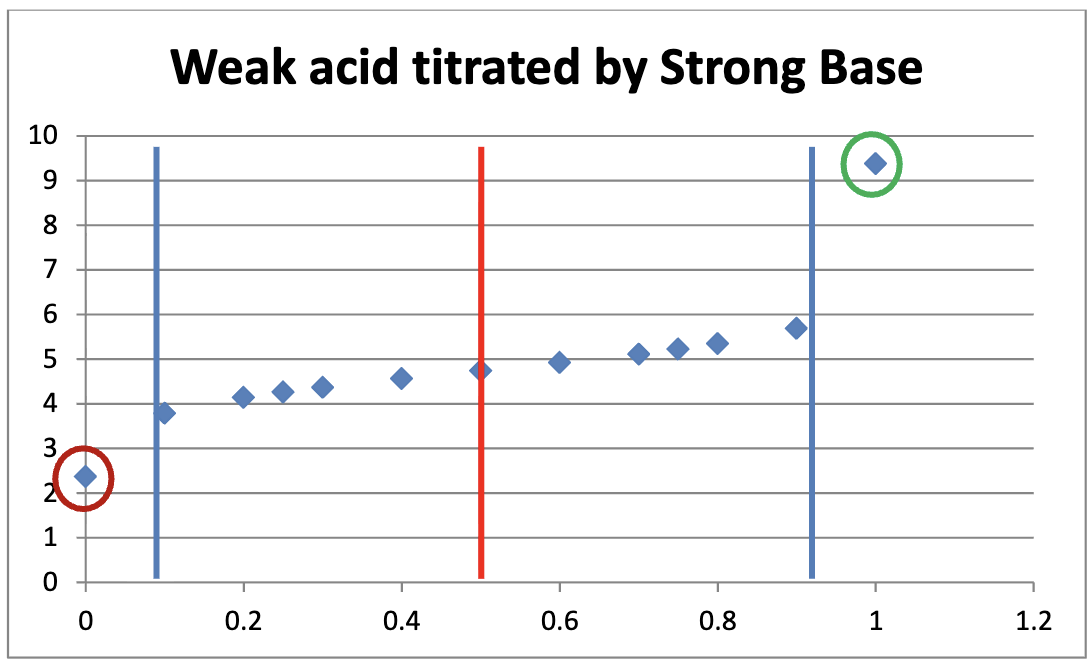
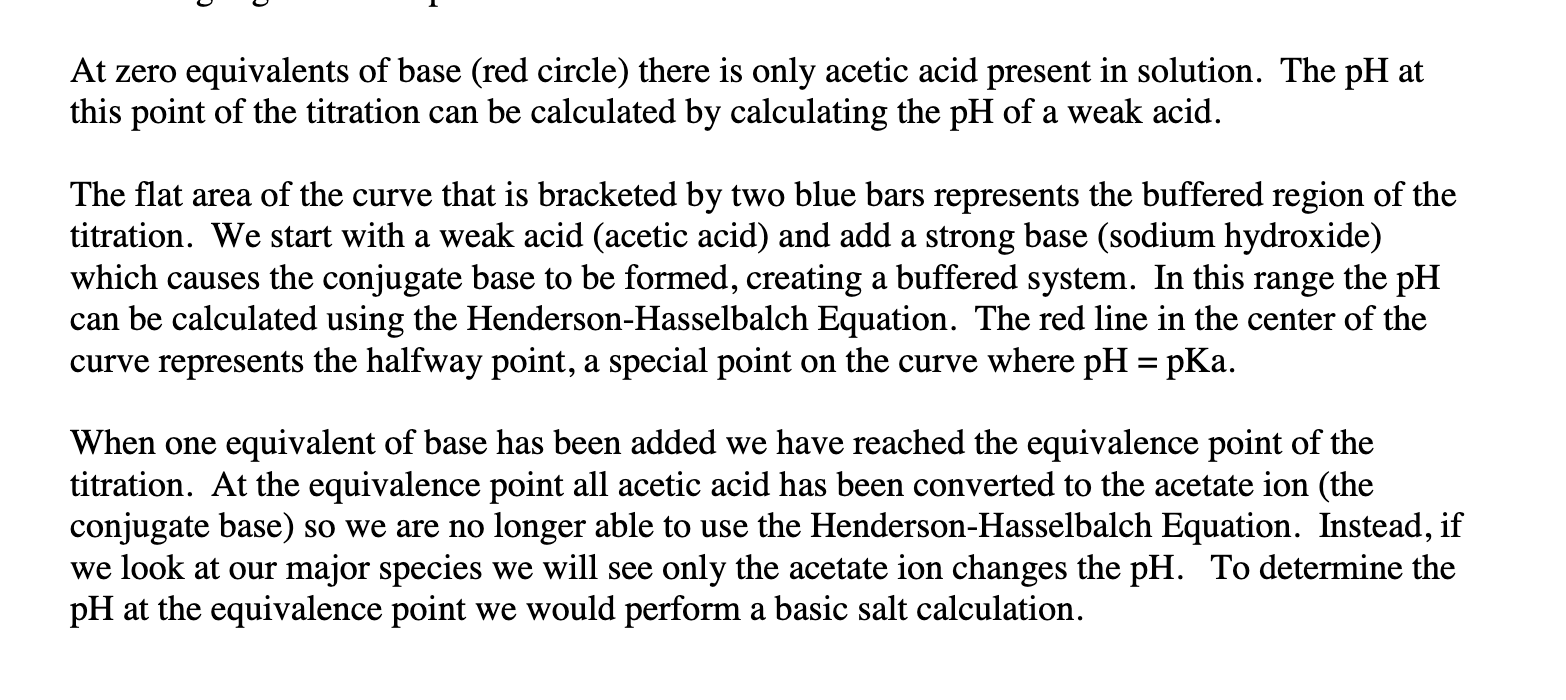
What is a titration curve?
A titration curve is a plot of some solution property versus the amount of added titrant. For acid-base titrations, solution pH is a useful property to monitor because it varies predictably with the solution composition and, therefore, may be used to monitor the titration’s progress and detect its end point.
What is the main difference between strong acids and strong bases vs weak acids?
Strong acids and strong bases have complete dissociation, while weak acids must factor in equilibrium
What are the general steps for solving for weak acids/strong bases?
Figure out what 1 equivalence is equal to (equal moles of acid + base)
Figure out pH before we’ve added any base (weak acid calculation)
What happens after we add base (BCA table)
After we’ve made the buffered solution, we can use the Henderson-hasselbach equation. We must find the concentration to do this
If the ratio is = 1, what happens to the log X [A-/HA] component of henderson hasselbach?
It becomes 0
When comparing titration curves, the strongest acid will have the highest or lowest pka?
Lowest
Will more base increase or lower pH?
Increase
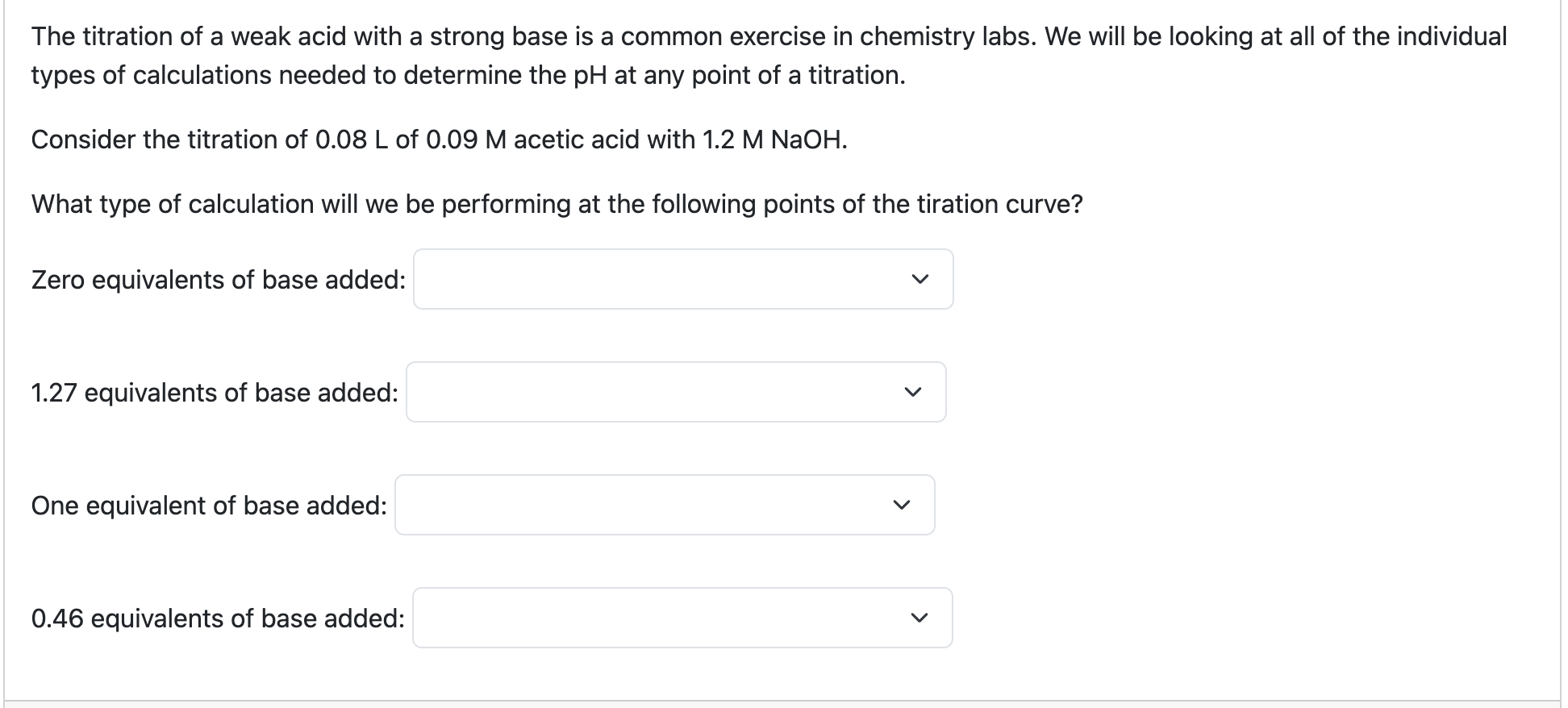
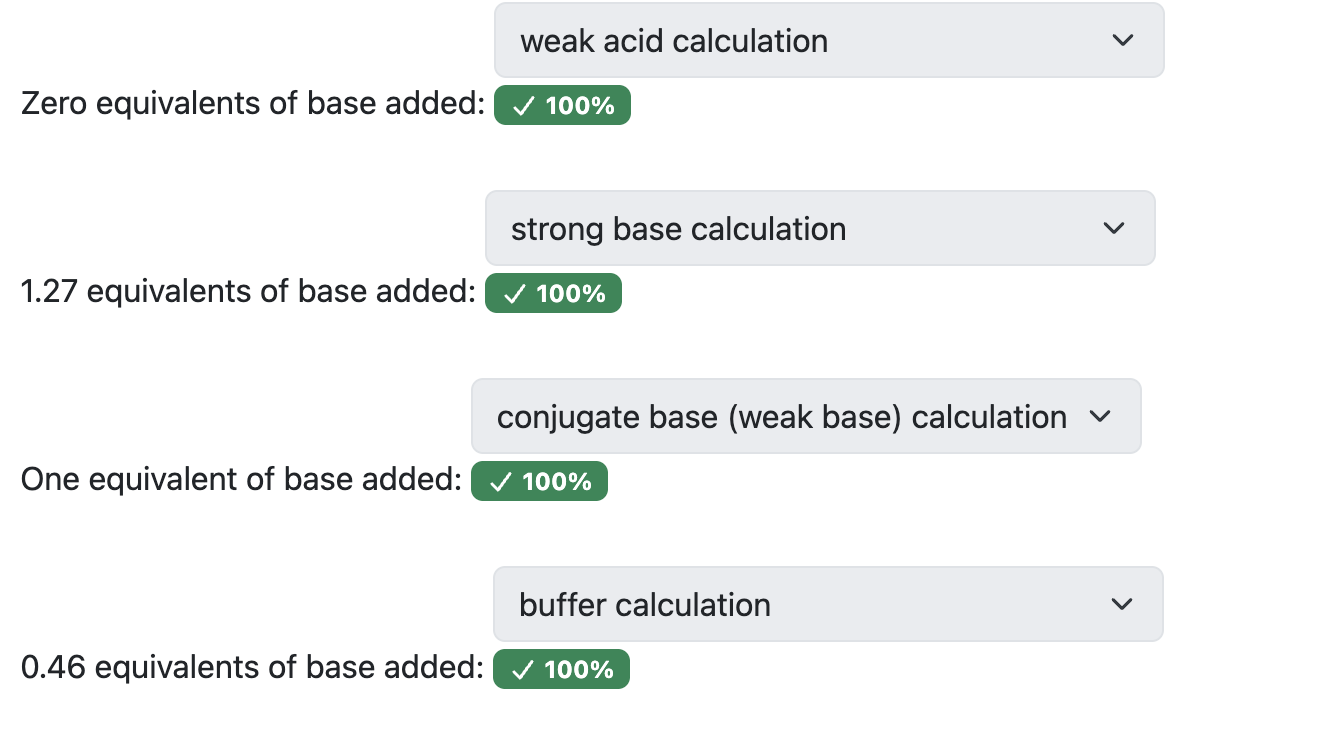
What are the general steps for ranking titrations in order of increasing pH at the equivalence point of the titration (top=lowest pH and bottom = highest pH)
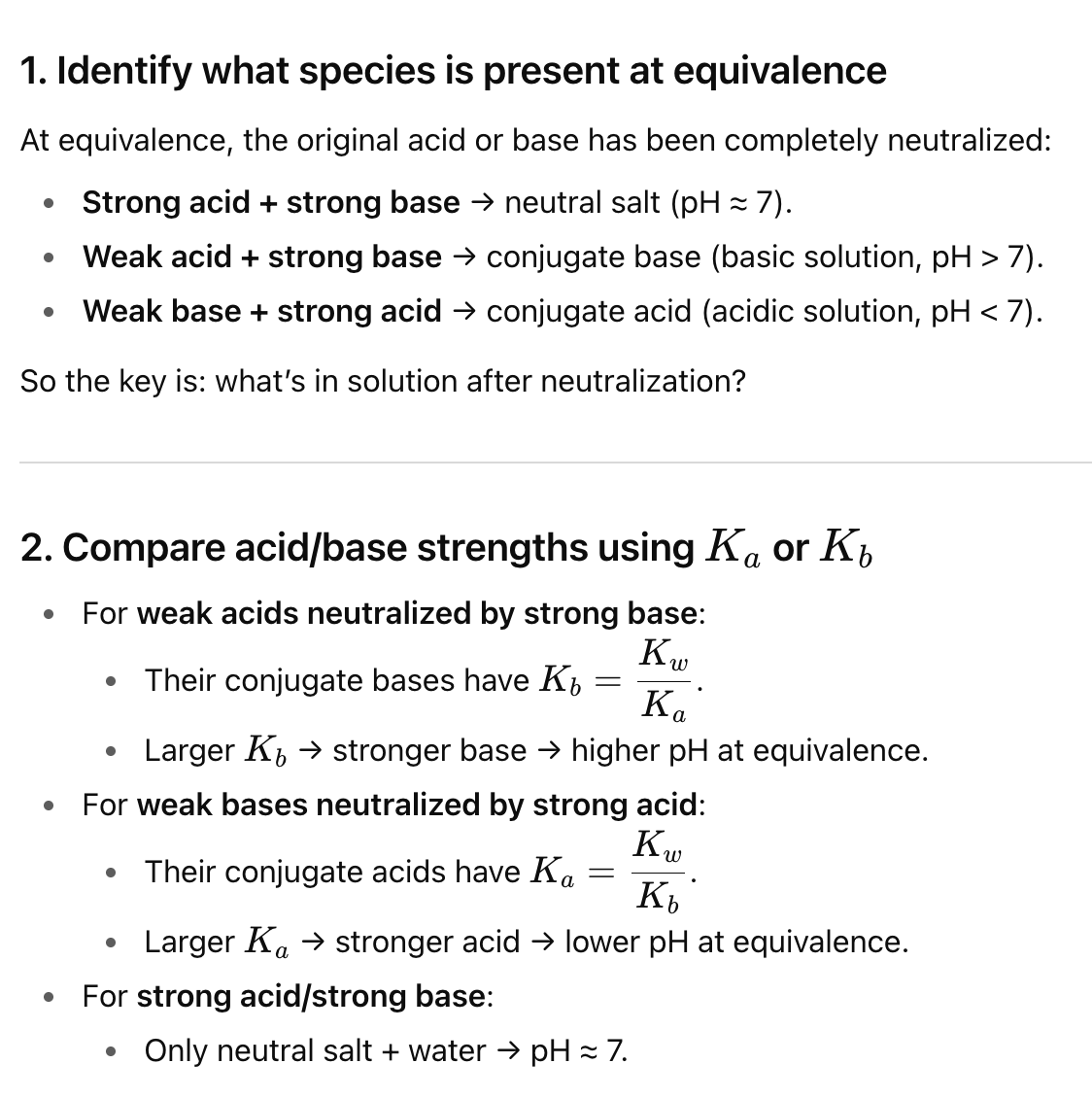
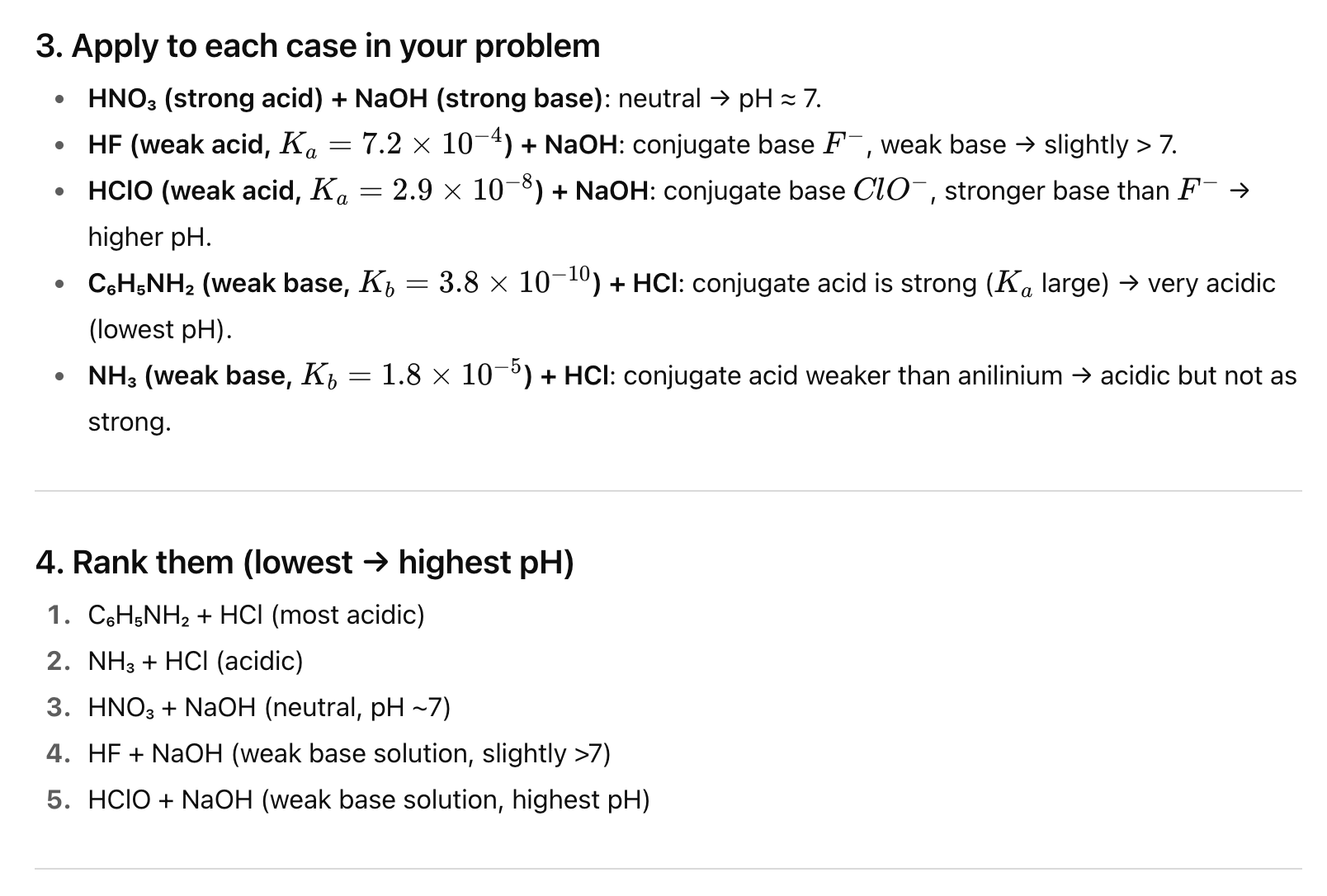
Describe the components of a polyprotic titrations curve
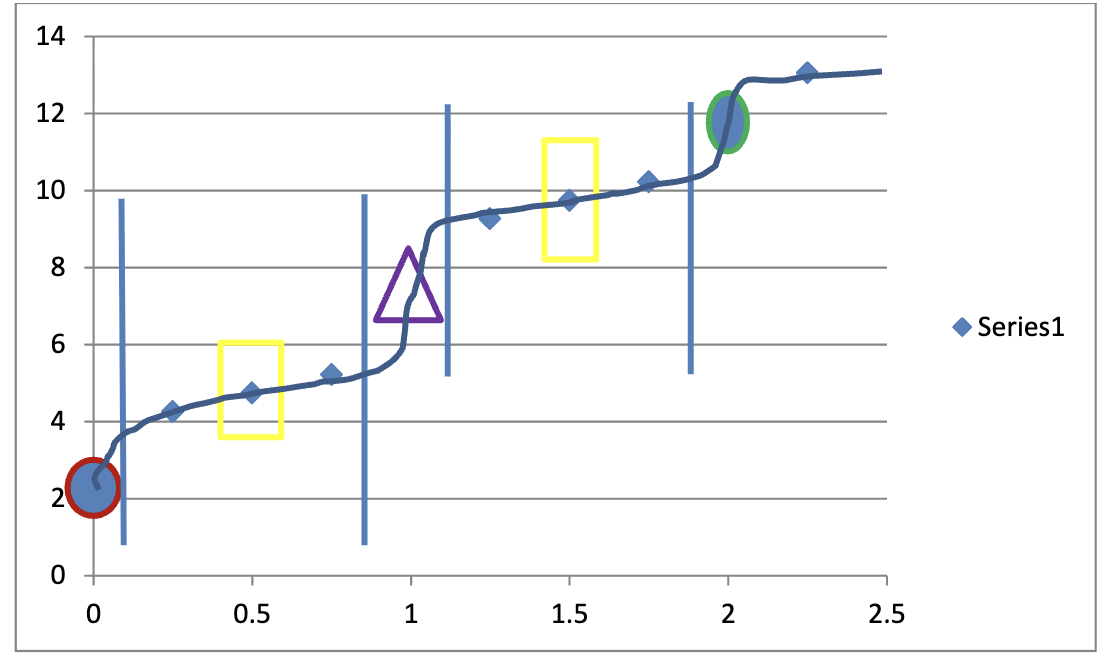
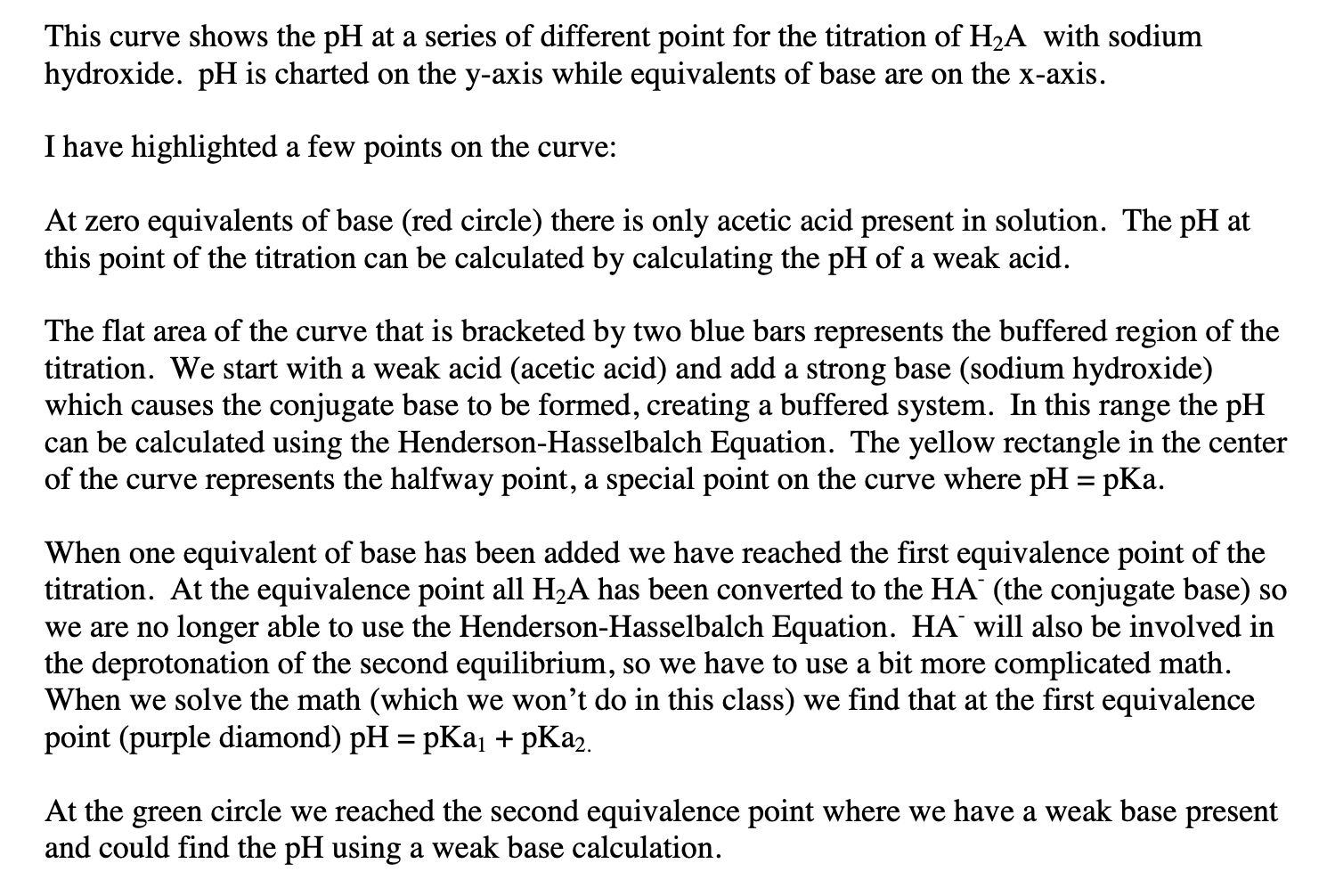
At equivalence of 1,2, or 3 on a polyprotic titration curve, what is the pH?
The average of pKA1 and pKA2
Where can you use Henderson Hassleback on polyprotic titration graph?
Between 0 and 1, and 1 and 2 equivalence (both halfway points)
How can we get the inital or end pH for polyprotic acids?
The inital is a weak acid equation, but the end can be found through plotting on the pH line and using ka values
In polyprotic acids, when Ka’s get smaller, what 2 important things does that mean
There is smaller amounts of dissociation, and you can treat each dissociation as seperate
How do you know how many equivilance of bases there are?
Depends on how many acidic protons
On a graph, will you usually have flat lines or curves at halfway points? Why?
Flat lines because they represent buffers

When you have questions like this: What do you do?
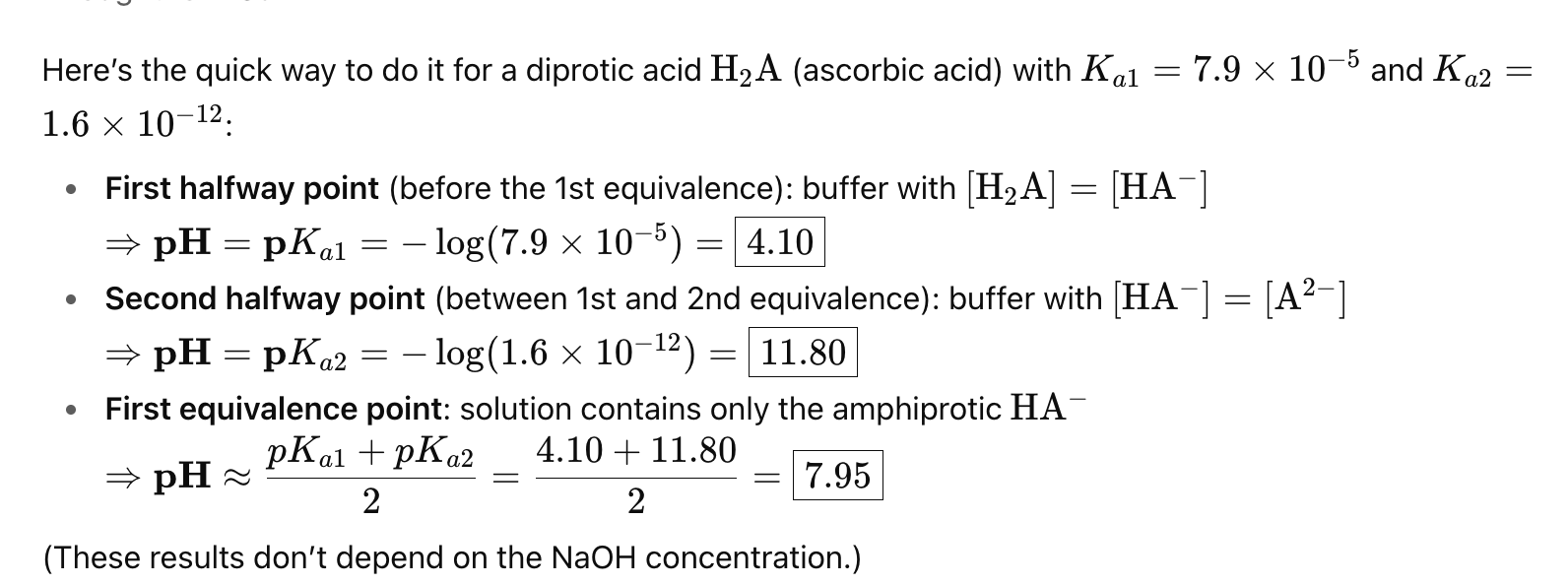
What happens to the charge at the equivalance and halfway points?
Equiv: Drop by 1
Half: Drop by 0.5
Define protanated?
Transfer of a proton, gaining a positively charged hydrogen ion
At ½ what is pH = to?
pKa
Is a lower pKa acidic or basic?
Acidic
Which proton will be removed first?
The acidic one
What is an equivalent?
Amount of base needed to completely remove H+, anytime pH is below pka, its in the protenated form. Above is deprotenated
When going from A to B drawings, what changes?
You’re just removing the most acidic proton
In amino acids and peptides, how do you know how many equivalence there are?
Based on how many are needed to remove both protons
What does isoelectric mean?
Not charged
How do you know if something is in its acidic or basic form?
If the pH>pKa (by 2 or more units) the base form will dominate. If pH < pKa, the acid does
What will OH- always interact with?
The best acid
How do you know what one equivalent is equal to?
The moles
What is A- and HA in the henderson hasslebach?
A- is the base and HA is the acid
What is the halfway point pH equal to?
pKA
Anytime that a weak acid is titrated with a strong base, will pH (at equivalence) be greater or less than 7?
Greater
At equivalence, its equal ___ of acid and base
Moles
At the equivalence point, what is equal?
Acid = base
What is 1 equivalent = to?
Moles of acid/ base in original solution
At the halfway point, what is ph = to?
pka
If you’re comparing endpoint pH’s, what do you do?
At endpoint only the conjugate is left, so you can rank based onka/kb to see which has the highest/lowest pH. If its being titrated with strong acid it will be Ka, strong base will be Kb
How do you know how many equivalence are needed?
Depends on how many pkas are given in the problem
WIll there be OH- or H3O+ at the third equivalence point?
No, you’ve used all the strong acid and base by that point
How do you decide which pka to use?
Look back at the titration curve
How do you know when to stop using a bca table and start using an ice table
When the strong acid or base has run out